
Index:
UPDATED ✅ Do you want to know about GPS and what are its origins and impact on the world? ⭐ ENTER HERE ⭐ and Learn Everything FROM ZERO! ✅
With the development of technology, numerous solutions have emerged to simplify people’s daily lives. Reason why, numerous terms have been adopted that cover endless utilities that are optimal when putting a certain system into operation. Such is the case of the well-known geolocation system that uses the acronym “GPS”.
In general, users rely on this system that, through their smartphones or cars, allows them to locate a specific point on a map and get to any place, without even knowing the address. But, although it is a widely used technology at the moment, the truth is that yet many do not know how GPS actually works.
That is why, in order to understand What is GPS and what is it for?, next, we will detail this information of great interest. Also worth it know its origin and its historythe aspects that intervene in your signal to offer accurate results and to its scientific foundations. Which, you can find out here.
What is the GPS system and what is it for in computing?
Being the acronym for “Global Positioning System” which, in Spanish, means “Global Positioning System”GPS is defined as a satellite navigation system that allows determine the position of any object on the entire Earth. Which consists of a navigation system that works through a net that has at least 24 satellites and are located on the planet at an altitude of approximately 20,000 km.
For its part, in computing, this global positioning technology has been induced in different devices and mobile phones, mainly. In this way, it serves to locate said equipment in case of theft, run certain applications that require this functionality, maximize the performance of games, arrive at a precise address when you travel by car, motorcycle, bicycle or even on foot, etc.
In that sense, GPS has the ability to specify the location of any person, vehicle or thing, regardless of the speed at which it moves. In addition, it has the necessary characteristics to reveal data such as its height at any instant of time and its specific point within the terrestrial globe. Considering that, its accuracy is up to centimeters And that is why it is so effective.
What are the characteristics of GPS and what can be done with it?
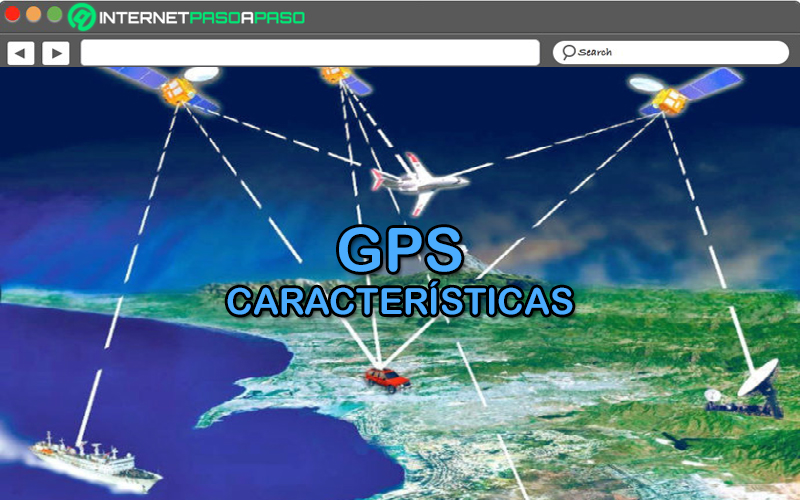
To know in more detail what GPS consists of, it is valuable to specify What are its main characteristics. Therefore, first of all, it is worth noting that a GPS It is made up of three elements:: Satellites in orbit around the Earth, GPS receivers owned by users and ground control and monitoring stations. Thus, it is valued that the GPS is made up of three different components or sectors, such as: Space Sector, User Sector and Land Sector.
Next, we specify what each of them is about:
- space sector: It is made up of 24 satellites arranged in a total of six orbits (4 satellites in each of them). which travel around the planet a height of 20,200 km and its speed of rotation is approximately one return to Earth every 12 hours. Likewise, they follow a route with an inclination of 55 degrees with respect to the celestial Equator.
- User sector: It is made up of an antenna, an amplifier and a receiver. From these elements, the team is in charge of choosing the satellites that can provide the information required to determine the relevant position and measure the time between transmissions.
- land sector: Consists of a control sector that is responsible for correct the signal acquired through the satellites and, in addition, it improves the possible deviations of the orbit. Generally, it is made up of 9 stations (5 tracking, 3 data and 2 general).
Thanks to all this, the GPS is distinguished by the following peculiarities, specifically:
- Useful life: 7.5 years.
- Altitude: 20,200 km.
- Period: 11 hours and 58 minutes (or 12 sidereal hours).
- Inclination: 55 degrees around the Earth’s equator.
- Hour: 1 ns.
- User Capacity: unlimited.
- Coverage: Worldwide.
- coordinate system: 8,000.
On the other hand, to characterize this recognized global positioning system, it is necessary to know its main applicationsbeyond its specific operation in the computing environment.
Therefore, below, we point out its most outstanding uses:
- military use: It is no secret to anyone that this has been the main application of GPS. Since, many years ago, it was born as a tool to develop a system capable of provide the exact location of a person or object and even its speed. With this, it also allowed the development of radio navigation technologies and the launching of weapons towards a specific geographical location.
- Public and private security: In the field of security, the Global Positioning System also has multiple applications. Whether for anti-theft measures, as a personal security tool or its integration in alarms.
- Air, sea and land navigation: Although these tools were used by the military, the truth is that many of them ended up being used by civilians in different media based on sea, air and land navigation.
- Engineering and cartography: Of course, GPS is also used to collect precise and reliable data from any point on the globe in order to carry out projects in this field. Also, it allows take measurementsmonitor what happens in large structures due to overloads in real time, detect seismic movements located at a certain point, etc..
- Sport: In conjunction with its applications in computing, GPS is also widely used for sports. Since, allows you to control the progression of certain workouts and thus, optimize performance with absolute precision by obtaining data such as race pace, distance traveled, delay time, etc.
History and Origin When was it created, who did it and how has GPS evolved?
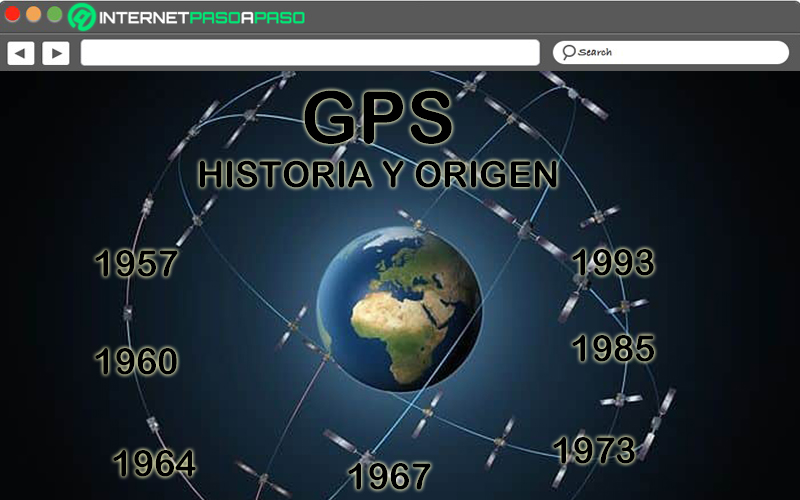
Basically, the origin of GPS as a Global Positioning System dates back to the period between between the years 1957 and 1960. Since 1957, the first artificial satellite known as “Sputnik” launched by the Soviet Union. Then, starting in the 1960s, the OMEGA land navigation system pushed this technology forward and became the world’s first radio navigation system.
However, the notable limitations of these systems, produced the need for get a more universal navigation solution which could guarantee greater precision. From there, the United States Navy began experimenting with a satellite navigation system to provide up-to-date and accurate position observations in your fleet systems.
In principle, such a thought system had to meet global requirements in order to cover the entire surface of the Earth. In addition to this, it was necessary that it show continuous operation without being affected by atmospheric conditions and, as if that were not enough, it should also allow its use in aviation. Therefore, the fundamentals of GPS correspond to a system: Global, continuous, dynamic and precise.
But, under these conditions, the “TRANSIT” system was born in 1964 which, three years later, became available for commercial and military use. Which, mainly, had a constellation of 6 satellites in low polar orbit and at a height of 1,074km. However, although it achieved globality, it was not constant. Because of this, the experts kept looking for other solutions in order to meet the foundations of a truly optimal Global Positioning System.
Given this, in 1967the US Navy launched a satellite called “timation” that managed to ensure the feasibility of placing precise clocks in space so, maintain the necessary continuity for GPS. Thanks to this, in 1973were able to combine programs designed by the United States Air Force and Navy to foster a novel navigation technology project known as “Navigation Technology Program”. which was later renamed “NAVSTARGPS”.
So then they started develop another 11 satellites experimentally to improve the operation of NAVSTAR with a total of 18 satellites planned. With this, in 1985manage to complete the current constellation and due to its remarkable constancy, dynamism and precision, they were able to declare it as a system with “full operational capacity” by adding 24 satellites with three alternates in 1993. With what, the famous GPS that we know today began.
How does the global positioning system work and how accurate is its data?

Regarding its operation, we highlight that the GPS satellites (24 in total) they are in charge of circulating the Earth twice a day, that is, every 12 hours. Which, they do in an exact orbit to be able to transmit signal information to Earth.
GPS receivers then acquire this information and use triangulation or trilateration to measure or calculate the exact location of the user. Considering that, for this, said receiver focuses on compare the time of emission and reception around a signal transmitted by the satellite. Thus, you can find the position of the user to display it.
Therefore, through the process of trilateration, the position of the receptor can be discovered in the following way:
- each satellite of the set indicates that the receiver is located at a point on the surface of the sphere. Basically, with a center on the satellite itself and a radius equal to the total distance from the receiver.
- After getting the data in question based on two satellitesthe result will be a circle that illustrates when the two spheres intersect at some point where the receiver is located.
- grounded on the information of a third satellite, the lack of synchronization between the clocks of the satellites and the GPS receivers is suppressed. With that, an exact 3D position is found based on latitude, longitude and altitude.
So, in a nutshell, the GPS receiver will have to be connected to the signal of two or three satellites, at a minimum, to find the 2D position and movement of the track. Then, with another satellite in sight, the receiver manages to calculate the 3D position of the user and thanks to this, it will also be able to compute other data of interest (speed, heading, travel distance, distance to destination, track, sunrise time, sunset time, etc.).
Next we will see the accuracy of the data:
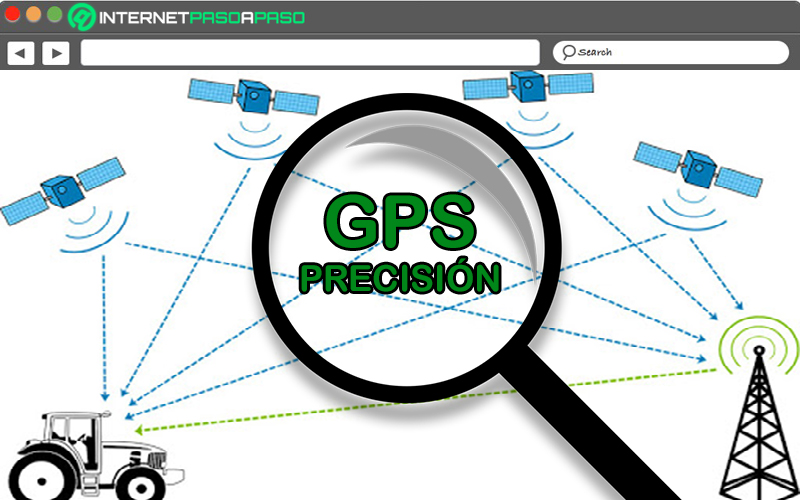
Now, surely, you are wondering how accurate the Global Positioning System is with respect to the information it provides. Therefore, we point out that GPS systems include some degree of random error that can fluctuate between 15 meters and 100 meters. Assessing that its accuracy will depend on the number of visible satellites at a given moment, as well as the user’s position and certain atmospheric factors. However, it is noted that Currently GPS receivers are very accurate.
Due to the parallel multichannel design they contain. Well, by default, maintain strong connections no matter you are in urban environments with tall buildings or in a dense forest, for example. Apart from this, users can also get better accuracy with Differential GPS (DGPS)known as “Differential Global Positioning System”. Which is ideal for correcting existing errors in satellite orbits and perfecting the position provided by the GPS.
Whereas, it works as follows:
- A set of fixed ground stations is responsible for comparing the position provided by the gps and the actual situation set the error at each time.
- Once said error is computedthis is communicated and emitted towards the user antennas and thus, the equipment of the same they focus on applying said error to discover the correct position (based on a margin of 10 meters, maximum).
All this, achieved thanks to the DGPS structure which has the following elements: Station monitored as reference (which has: a GPS receiver, a microprocessor and a transmitter) and the user team (contains a DGPS receiver which is a GPS with a data link receiver from the monitored station).
GPS signal What is its frequency and what aspects influence it?

While it is true, the GPS signal provides the “time of the week” accurately, based on the satellite’s onboard atomic clock, GPS week number, and a status report. Thus, each transmission lasts 30 seconds and carries 1,500 bits of encrypted data, which basically makes a GPS signal has three bits of summary information.
Which are:
- A pseudorandom code: It is an identification number that allows knowing which satellite is transmitting the information. Usually this code is located on your Garmin GPS unit.
- ephemeris data: They offer information to the GPS receiver, indicating where each GPS satellite has to be in an instant given during the day. These dates, present the orbital information for each element of the system.
- almanac data: These are data transmitted by each satellite, constantly. They usually provide information about the status of the satellite, current date and time. Which, are essential to determine a position.
For its part, each GPS satellite emits a navigation message at 50 bits per secondcontinuously, on the 1600 MHz microwave carrier frequency. Specifically, however, GPS satellites are characterized by transmitting two low-power radio signals that they are known as “L1” and “L2”.
In the case of GPS for civil use, basically, uses the L1 frequency in the UHF band that provides 1575.42 MHz specifically. Whereas, the L2 signal offers 1227.6MHz. With this frequency, the civilian GPS signal will be able to pass through the clouds, the plastic and the glass (i.e. by line of sight). But, it will not be able to be transmitted by most solid objects, such as mountains or buildings.
This means that, normally, the frequency of the GPS signal is influenced by several aspects that can obfuscate it, among which we mention:
- Receiver clock errors: Atomic clocks aboard GPS satellites are usually accurate. But, the receiver’s built-in clock not as accurate as them and therefore may show slight timing errors that affect the GPS signal.
- orbital errors: Are the ephemeris errors and present inaccuracy in the location reported by the satellite.
- troposphere and ionosphere delays: As it passes through the atmosphere, the satellite signal can be reduced. However, the GPS system has an added model that calculates an average delay in order to correct this type of error.
- Intentional satellite signal degradation: Known as “Selective Availability” it corresponds to a premeditated signal degradation that was once imposed by the United States Department of Defense. Thus, they sought to prevent military adversaries from could use high-precision GPS signals. But, currently it has been disabled to improve the GPS signal of civilian receivers.
- Number of visible satellites: Electronic interference, terrain, buildings, and dense foliage often block GPS signal reception, causing position errors or missing readings. Since, the fewer satellites you can “watch” a GSP receiver, the lower your accuracy.
- signal multipath: It is a problem that occurs when the GPS signal is reflected by some objects (rocky surfaces, tall buildings, etc.) before it reaches the receiver. Reason why, the travel time of that signal is increased and generates noticeable errors.
GPS in the development of telecommunications. How has it influenced the development of new devices?
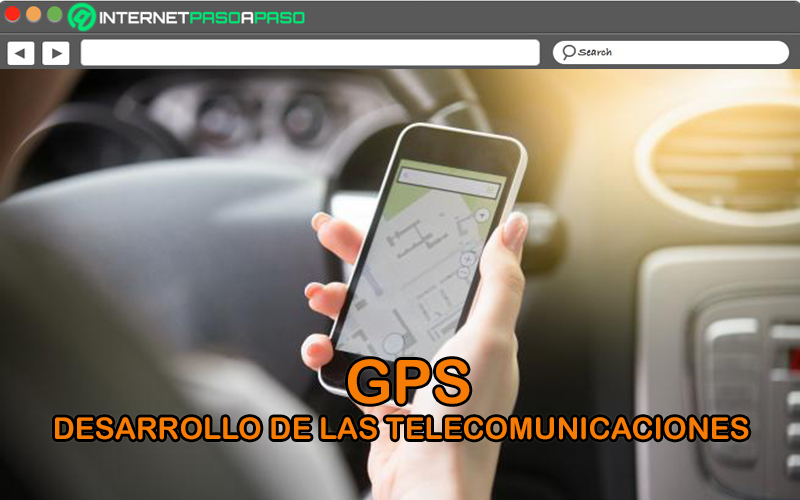
It is no secret to anyone that GPS corresponds to a global positioning technology that has represented a significant advance in society. Therefore, just as it has generated benefits in the field of engineering, security, defense and information technology, GPS has also influenced telecommunications and the development of new devices.
Since, by broadening users’ spatial perspective, manufacturers and developers have gone to great lengths to take advantage of the strengths of this technology in order to provide better solutions to people. As a consequence, smartphones in use today have the ability to enable location from Global Positioning System.
In this way, using the functions of these devices and using applications that support this technology, users have the possibility of locate and pinpoint different locations immediately, monitor road traffic, find lost objects, etc. Taking into account that until new cars have this system included.
Therefore, GPS has contributed to the development of society worldwide, notably. Well, in terms of telecommunications, people previously did not enjoy these possibilities and that is why, this system has revolutionized the way in which individuals can communicate.
GPS and Einstein’s relativity How is the system related to this theory?
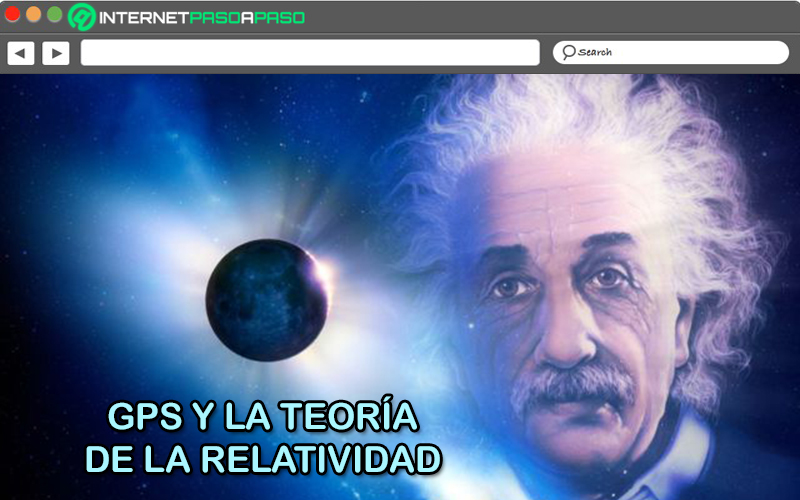
In 1915, Albert Einstein surmised that gravity is intimately linked to space and time, from his General Theory of Relativity. Well, these three elements are everywhere and at all times in the universe. In which, its main link is geometry because in the presence of a mass, space-time warps such that any other mass that notices that warped space will be forced to follow different trajectories as long as it is present in space without deforming.
Thanks to this, it can be affirmed that the relativity proposed by Einstein and the Global Positioning System are highly linked. Therefore, it is estimated that the revolutionary GPS it would not be possible without the scientific bases that establish this recognized theory. Now, basically, this link is due to the fact that a clock located on the surface of the Earth and another in space they don’t move at the same pacegiven that time depends on gravity at all times.
As a consequence, the delay between the two clocks will have to be assessed at the time of programming a system that provides information about the position of a given object on the earth’s surface. Which, refers to the GPS. Therefore, to achieve the degree of precision guaranteed by the Global Positioning System For nature, it will be necessary to take into account the Theory of Relativity.
Since, otherwise, the influence of GPS on satellite clocks would reveal errors that exceed the required accuracy, widely, around about 10 kilometers of inaccuracy every day and therefore, it would become useless.
networks